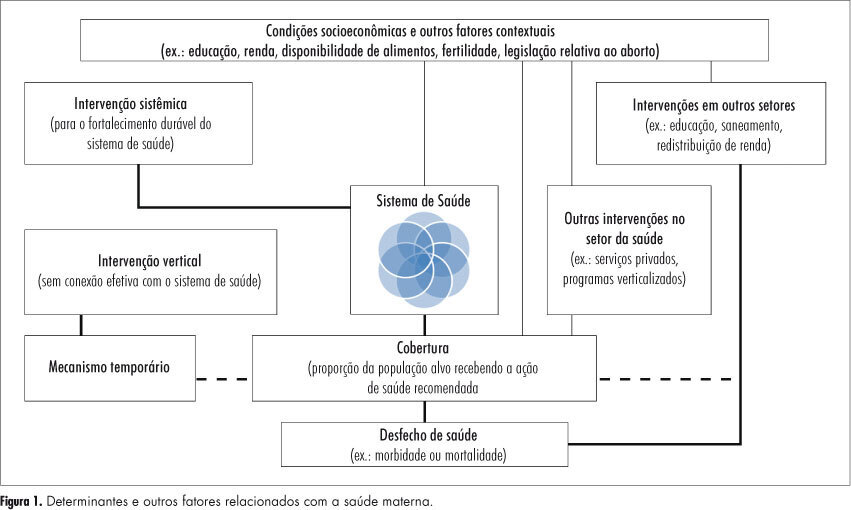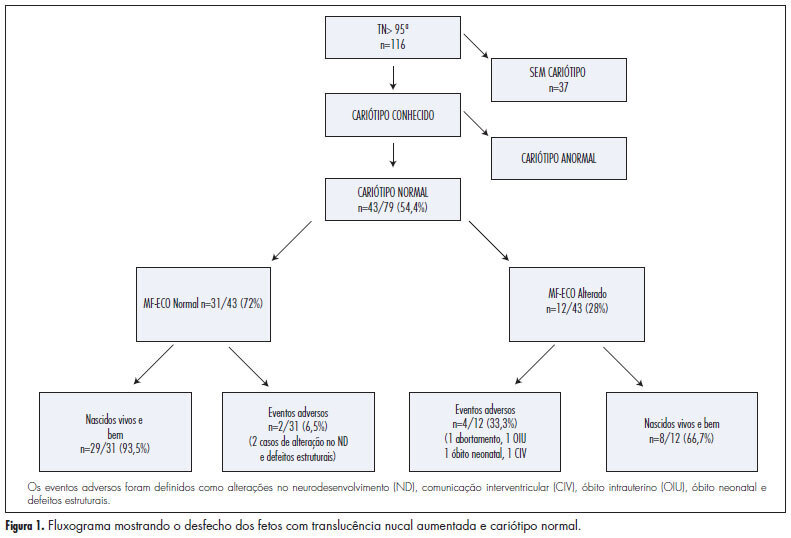Summary
Revista Brasileira de Ginecologia e Obstetrícia. 2011;33(10):273-279

Summary
Revista Brasileira de Ginecologia e Obstetrícia. 2010;32(6):273-278
DOI 10.1590/S0100-72032010000600004
PURPOSE: to translate, culturally adapt and validate the questionnaire "International Consultation on Incontinence Questionnaire Overactive Bladder" (ICIQ-OAB) for the Portuguese Language. METHODS: two Brazilian translators acquainted with the objectives of this research translated the ICIQ-OAB into Portuguese and both translations were back-translated by two other native English speaking translators. The differences between the versions were brought to agreement and pre-tested in a pilot study. The final version of the ICIQ-OAB was applied together with the previously translated and tested version of the International Consultation on Incontinence Questionnaire - Short Form (ICIQ-SF) in 142 male and female patients with irritative urinary symptoms. For the validation of the ICIQ-OAB the following psychometric features were evaluated: reliability (internal consistency and test-retest) and validity of the survey. The retest was performed four weeks after the first interview. RESULTS: the reliability of the instrument was demonstrated through the Cronbach α Coefficient, with a general result of 0.7. The test-retest corroborated the stability of the instrument through the intraclass correlation coefficient and presented a result of 0.91 and 0.95 when compared to both the ICIQ-OAB and ICIQ-SF, respectively. When the instruments were compared by the Pearson correlation coefficient the result was 0.7 (p=0.0001), that confirms the validity of the study criterion. The concurrent validity was evaluated by the correlation between some clinical and sociodemographic variants and the ICIQ-OAB score. CONCLUSION: the culturally adapted version of the ICIQ-OAB translated into Brazilian Portuguese presented satisfactory reliability and survey validity and was considered valid for the evaluation of irritative urinary symptoms of Brazilian patients of both genders.
Summary
Revista Brasileira de Ginecologia e Obstetrícia. 2016;38(6):273-279
To verify sociodemographic factors associated with the occurrence of abortion in women of reproductive age, in areas covered by the Family Health Strategy (FHS), a program from the Brazilian Ministry of Health.
A cross-sectional study using household surveys of 350 women aged 15 to 49. The report of abortion was a variable indicator, and sociodemographic aspects were covariables. Prevalence ratio (PR) and respective 95% confidence intervals were used to estimate the magnitude of the associations.
There were associations among age, civil status, race/color, and religion; an increase in the prevalence of lower levels of education, age less than 20, and student status were protective factors.
The association between sociodemographic characteristics and the report of abortion is attributed to the fact that there is a lack at the FHS in the availability of fundamental healthcare services for young women; these findings call for action to guarantee the access to information about contraceptives and guidance to decrease the risk of unplanned pregnancies and abortions.
Summary
Revista Brasileira de Ginecologia e Obstetrícia. 2008;30(6):274-280
DOI 10.1590/S0100-72032008000600002
PURPOSE: to assess the prevalence of group B streptococcus colonization (GBS) in pregnant women in prodrome or in labor. METHODS: vaginal and rectal cultures were collected from 201 pregnant women, in the admission sector of a public maternity center in the northeast region of Brazil (São Luís, Maranhão). The samples obtained were inoculated in a Todd-Hewith's selective culture medium and after that they were sub-cultivated in blood-agar plates. The CAMP (Christie, Atkins, Munch-Petersen) test was used to identify GBS, which was then serologically confirmed by the BioMérieux Api 20 Strep kit microtest. GBS positive samples were submitted to an antibiotic sensitivity test. Sociodemographic variables, gynecological-obstetrical antecedents, and perinatal outcomes were studied. The Epi-Info 3.3.2 programs from World Health Organization and Statistical Package for Social Sciences 14.0 version were used for the statistical analysis. The prevalence ratio was used as risk measure, considering p<0.05 as significance level, and accepting 80% power. RESULTS: the prevalence of SGB colonization in the mothers was 20.4%. There was no association between the sociodemographic variables or gynecological-obstetrical antecedents and a larger presence of SGB colonization. There were two cases of infectious outbreak among neonatal babies from colonized mothers, but hemocultures resulted negative. High resistance rates were found for the following antibiotics: clindamycin, 25.4%; erythromycin, 23.4% and ceftriaxone, 12.7%. CONCLUSIONS: the prevalence of SGB colonization was high among the mothers, similar to what had been described in other studies. The elevated rates of antimicrobial resistance, especially to ceftriaxone indicate the need for further studies to determine the serology of this agent and of orientation protocols for rational use of antimicrobials.
Summary
Revista Brasileira de Ginecologia e Obstetrícia. 2013;35(6):274-280
DOI 10.1590/S0100-72032013000600007
PURPOSE: To analyze the perinatal and pediatric outcome of fetuses that showed nuchal translucency (NT) above the 95th percentile (P95) and a normal karyotype in order to obtain data allowing better maternal prenatal counseling. METHODS: fetuses from a tertiary obstetric service with an NT above P95 and a normal karyotype were analyzed between 2005 and 2011. We analyzed gestational ultrasound follow-up, fetal and postnatal echocardiography (ECHO), weight, length and Apgar score at birth, and neuropsychomotor development by the Ages and Stages Questionnaire (ASQ) up to July 2012. RESULTS: During this period, there were 116 cases of nuchal translucency above the 95th percentile, and the fetal karyotype was determined in 79 of them (68%). Forty-three analyses were normal (54.4%) and 36 were altered (45.6%). Among the fetuses with a normal karyotype, one was miscarried at 15 weeks of gestation with Cantrel pentalogy and one died at 24 weeks with several structural abnormalities. There was one neonatal death of unknown cause and two cases of intraventricular communication (IVC) detected by fetal ECHO. Postnatal echocardiography revealed the persistence of IVC in one case and one case of atrial septal defect (ASD) and patent ductus arteriosus (PDA). Of the 40 surviving children, only 1 showed delayed speech development and another presented autism. The remaining cases resulted in normal neurodevelopment. CONCLUSION: During the monitoring of fetuses with increased NT and a normal karyotype, parents can be best advised that when a 2nd trimester morphological-echocardiography ultrasound study is normal, the probability of the child being born alive and well is high (93.5%).

Summary
Revista Brasileira de Ginecologia e Obstetrícia. 2012;34(6):274-277
DOI 10.1590/S0100-72032012000600006
PURPOSE: This study aimed to evaluate the results of neovaginoplasty by a modified McIndoe-Bannister technique and by the non-surgical Frank technique. METHODS: This retrospective study was conducted on a convenience sample of 25 women with vaginal agenesis undergoing surgical or conservative treatment at an Infant-Pubertal Gynecology Outpatient Clinic. Data were obtained from the medical records. Fifteen women underwent the surgical McIndoe-Bannister modified technique Surgical Group, and 10 women underwent the non-surgical Frank technique Frank Group. The following parameters were considered for comparative analysis between the two samples: vaginometry, surgical and non-surgical complications, and sexual satisfaction after treatment. Sexual satisfaction was assessed by a simple question: How is your sex life? RESULTS: There were differences related to vaginal length before and after performing exercises in both Frank Group (initial vaginal length 2.4±2.0 cm versus 6.9±1.1 cm after treatment, p<0.0001) and Surgical Group (initial vaginal length 0.9±1.4 cm versus 8.0±0.8 cm after treatment, p<0.0001). Increased vaginal length was observed in Surgical Group compared to Frank Group (Frank Group=7.0±0.9 cm versus Surgical Group=8.0±0.8 cm, p=0.0005). Forty percent of Surgical Group women had surgical complications versus no complications with the Frank technique. All women reported to be satisfied with their sexual life. CONCLUSION: The present data indicate that both the surgical and Frank techniques are effective for the treatment of vaginal agenesis, resulting in the construction of a vagina that pewrmits sexual intercourse and sexual satisfaction. The favorable aspects of the Frank technique are related to its low cost and to the low rates of major complications.
Summary
Revista Brasileira de Ginecologia e Obstetrícia. 2021;43(4):275-282
Childbirth is a biological, psychological, and sociological event that can be a positive or negative experience, and, without support, this period may be potentially damaging. Parturition may distort maternal emotions and lead to short- or long-term disorders such as postpartum depression and anxiety. The present research aims to study the effects of dialectic behavioral therapy-based counseling on depression, anxiety symptoms, and postpartum hematocrit level.
The current research is a clinical trial study, and the sample was selected using parturients who were referred to the Health General Center with a diagnosis of postpartum depression and anxiety. The sample size consisted of 116 subjects who agreed to participate in the study. The patients in intervention group underwent group dialectic behavioral counseling (10 sessions/one session per week) and the control group did not receive any type of intervention. The patients were assessed in the first and last sessions as well as 2 months after the end of the sessions, using the Beck depression scale and Spielberg anxiety scale as well as the results of hematocrit tests. Data were analyzed using the IBMSPSS Statistics for Windows, Version 21.0 (IBMCorp., Armonk, NY, USA)
The results implied the effectiveness of dialectic behavioral therapy on reduction of the depression score, anxiety symptoms (p-value ≤ 0.0001), and hematocrit level (p-value=0.04). The participants’ depression, anxiety, and hematocrit levels decreased in the experiment group compared to the control group, and this decrease has remained until the 2-month follow-up.
It seems that dialectic behavioral counseling reduces the levels of postpartum depression, anxiety, and hematocrits.
Summary
Revista Brasileira de Ginecologia e Obstetrícia. 2001;23(5):275-275